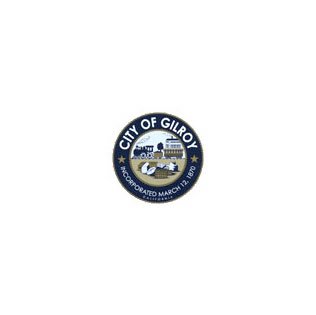A controversial mall proposal could re-ignite the fiercest
land-use battle Gilroy has seen in a decade, but it remains unclear
how much say the public will have in the debate this time
around.
By Serdar Tumgoren and Chris Bone
Gilroy – A controversial mall proposal could re-ignite the fiercest land-use battle Gilroy has seen in a decade, but it remains unclear how much say the public will have in the debate this time around.
Seven years ago, environmentalists, developers, landowners and city officials debated the virtue of targeting 660 acres of farmland east of Gilroy for development. Pro-growth interests carried the day, in part based on arguments that the now notorious “660” was needed for “campus industrial” uses, a land-use designation friendly to biotechnology firms and similar high-paying employers.
The city has more than enough land for such industrial uses, city officials were told Friday, as they discussed efforts by Westfield Group to rezone 120 acres of the land to make way for the biggest mall in Gilroy history. But the message didn’t come from the company.
“Things have changed since then,” said Gilroy Community Development Director Wendie Rooney, adding later that the city had enough industrial land for the next 50 years.
Her comment came in response to Councilman Peter Arellano, who had reminded councilmen that the need for industrial land was a prime selling point six years ago, when council rebuffed environmentalists and regional land-use officials and chose to include the 660 within the city’s 20-year General Plan boundary. The move set the stage for annexation of the land, which at the moment remains just outside city borders.
“Was there a direction to change the 660 (again)?” Arellano demanded of Rooney. “Did this city council instruct you to do that?”
City Administrator Jay Baksa reminded councilmen that the city’s General Plan calls for a broad planning effort for the area’s eventual development, regardless of Westfield’s mall proposal.
Councilman Roland Velasco said he remembered “very clearly” that, during the first round of fighting over the 660, pro-growth interests said the land would not be developed for 15 to 20 years.
“I kind of want to keep to my word,” he said. “Are we setting ourselves up so that the only option is to designate (this land) as something other than campus industrial?”
Arellano asked if it was “possible to put a stop to this right now,” a move that would avoid a replay of the intense and contentious planning process that occurred six years earlier.
“They’ve got the right to turn in an application and go through the process,” Baksa said.
Rooney argued against broad public representation on the task force reviewing the proposed mall, which she said could include horse racing, hotels, educational facilities, offices, entertainment venues – even serve as home for the Gilroy Garlic Festival. Instead, she proposed a task force composed of city council members and planning commissioners.
“There are many stakeholders in the 660, from the five to six landowners down to the Monterey Bay, because of the watershed issues,” she said. “To get concurrence from such a vast group would be impossible.”
The idea did not sit well with other councilmen.
“When we did the General Plan, part of that was to have citizen input,” Mayor Al Pinheiro said. “What I’m starting to get uncomfortable with is we’re going to take that area and have council and planning commission drive that process.”
Councilman Dion Bracco suggested a task force comprised of three councilmen, three members from the public, and three planning commissioners but exact numbers are still up in the air for any potential committee.
Westfield spokeswoman Katy Dickey could not be reached for comment Friday afternoon.
The company filed an application in summer 2006 to build the 1.5-million-square-foot mall. Early conceptual plans call for a pair of main street-style retail areas, centered as much around entertainment as retail. If constructed, the mall would be larger than the combined area of the big box shopping centers off Highway 152. Westfield is a $40 billion international company that owns 60 shopping centers in America, including the Westfield Oakridge in South San Jose and the Westfield Valley Fair in Santa Clara. Their combined roster of 600 stores includes Macy’s, Nordstrom, Sears and Target.
Accommodating the proposed out-door mall in Gilroy will involve extensive city analysis of environmental and traffic issues. The mall’s effect on schools, roads and water supplies concern all parties, and Rooney said she desires “general concurrence” with the council on what direction they should proceed. Mayor Al Pinheiro said concurrence is important at the grassroots level since these issues concern residents.
“We’re just starting this process,” Rooney said. “We’ve made assumptions, but we haven’t made any decisions.”
The mall’s construction ultimately depends on re-casting the enormous swath of land from a light industrial area to a retail one, and after this hurdle, Westfield has to get a thumbs-up from the Local Agency Formation Commission that approves annexation for Gilroy and other cities in Santa Clara County.
David Collier, a member of the environmental group Save Open Space Gilroy, fears the final decision in Gilroy will clear the way for the loss of more farmland.
“We have adequate campus industrial land already, so that’s not needed,” Collier said after the Westfield discussion. “What’s changed? Are we just reacting to an attractive proposal? To the siren of big bucks?”














